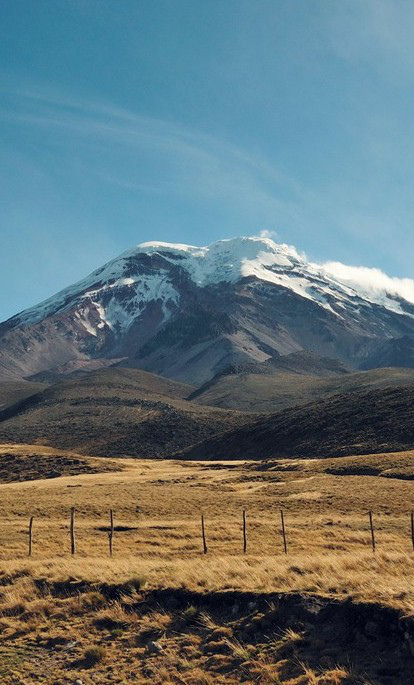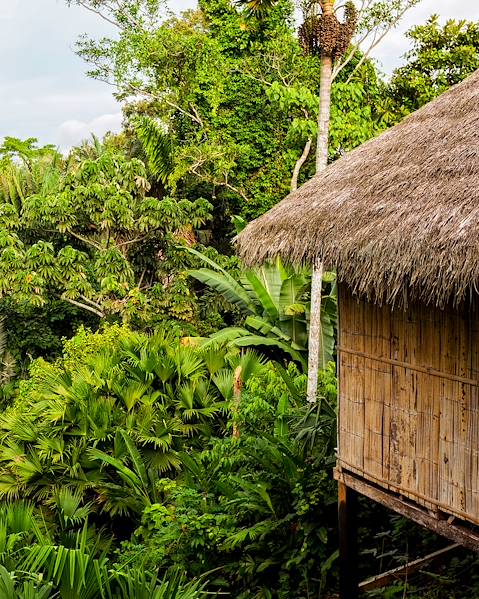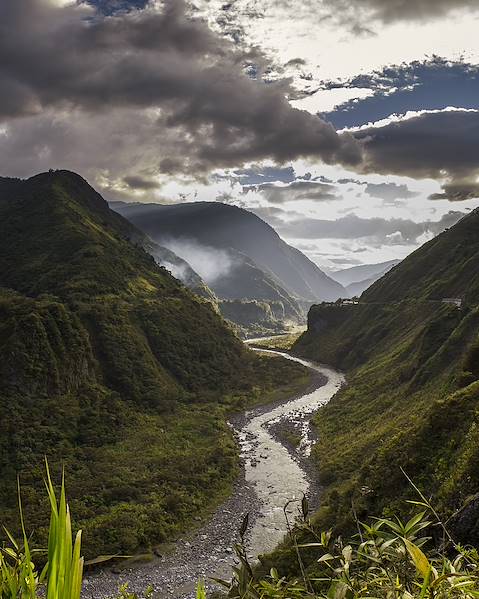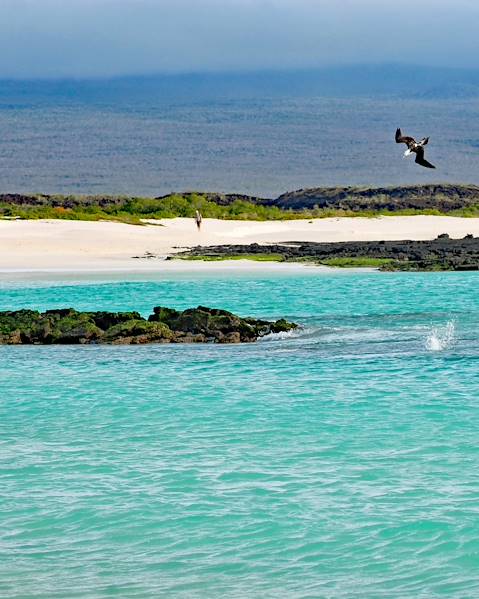For many travellers, Ecuador promises the trip of a lifetime. But it also poses challenges when trying to figure out what to pack. Temperatures are fairly predictable due to the country’s equatorial position, however, the climate does vary by location. The Galapagos Islands tend to be warm, with a cool ocean breeze; Ecuador’s lush interior – including the Amazon basin and the cloud forest – are hot and humid; while Quito, the world’s highest capital, is surrounded by rugged mountains and unpredictable weather systems. Ecuador also has a rainy season that generally runs from October to May. There’s a lot to consider when thinking about what to pack for Ecuador, so let’s break it down.
Essentials for Ecuador
Broadly speaking, what to pack for Ecuador depends on whether you’re heading inland or to the coast. The highlands – including Quito and Cuenca – are much cooler than places like the Galapagos and Guayaquil. Wherever your Ecuadorian adventure is set to take you, we recommend including a few essentials.
- A camera with extra memory and/or batteries
- Sun cream (the higher the SPF the better)
- Good quality sunglasses
- Insect repellent (required inland and on the coast, especially in the evenings)
- A hat
- A water bottle (Ecuador has made a major effort to reduce plastic bottle waste. Also, the tap water isn’t safe to drink)
Now you’ve got the fundamentals sorted, let’s consider the items you’ll find useful depending on your destination.
Quito, Cuenca and The Highlands
Although Ecuador is on the equator (hence the name), it’s capital city, Quito, doesn’t feel at all tropical. The climate is temperate due to its high elevation – at 9,350ft above sea level, Quito is the world’s highest capital city. Cuenca is also located at high elevation, so it has a similar climate. Temperatures are stable year-round, with warm days and chilly evenings. While frequently sunny, it also rains regularly in both Quito and Cuenca, particularly during spring and autumn. If you’re travelling to Quito and other high-elevation cities, you’ll want to bring layers and warm clothes.
- A waterproof jacket (for the aforementioned rain)
- Comfortable shoes (for days spent exploring on foot)
- A warm layering piece (to use in the morning and evening)
- US dollars (coins and small bills are best as locals are less likely to have change for larger bills)
The weather in the Andean countryside is similar to Quito with warm days and cool nights, but those planning to go trekking in the Avenue of Volcanoes will also want to pack:
- Trousers and long-sleeved tops (for protection from the sun and wind)
- Walking boots, if you plan on doing a fair bit of hiking
- Painkillers (to ease altitude-induced headaches)
Guayaquil
Guayaquil, Ecuador’s largest city, is hot and humid. Average daytime highs are around 30°C, so those visiting the so-called ‘Pearl of the Pacific’ should prepare for a warmer climate. Items to consider packing for this area include:
- Shorts and sundresses
- T-shirts and vest tops (preferably in quick-drying fabrics due to the humidity)
- A raincoat or an umbrella (it rains often, primarily during the summer)
The Galapagos Islands
The Galapagos Islands are mostly dry and hot, with cool coastal breezes. If you’re fortunate enough to be travelling to the Galapagos, it’s best to stick to mainly warm weather clothes. For excursions, you’ll want shorts or lightweight trousers that provide good coverage but still allow for airflow. We recommend bringing the following items:
- Water shoes that can double as hiking shoes (tough-soled footwear such as Teva’s are ideal for wet landings from dinghies and for walking over the rocky terrain)
- A dry bag (for carrying wet clothes and swimsuits. A zip lock bag works well)
- Ginger tablets or similar (to soothe seasick stomachs)
- Earplugs (if you’re sleeping on board there will be engine noise)
- Waterproof camera or GoPro (to capture the curious sea lions and cute turtles as you snorkel)
A medium-sized soft backpack will also come in handy for excursions and can double up as your plane carry-on. When considering this destination, it’s worth noting what not to bring too. In order to preserve the islands’ precious eco-system, the Galapagos has a strict policy that travellers are not allowed to bring seeds, food, or animals and animal products to the area.
Mindo and The Amazon Basin
Ecuador is home to cloud forest and rainforest – both of which are wet, humid, and hot year-round. In the span of a single day, sunny blue skies may greet you in the morning, followed by periodical showers through the afternoon, and cooler nights after the sun’s gone down. As well as preparing for the weather, you’ll need to think about the activities you have planned. Flexibility and durability are two key traits of what to bring to the deep delights of Ecuador’s lush interior. We recommend bringing:
- A compact rain jacket
Lightweight, breathable short and long sleeve tops (to protect you from the sun and the bugs) - Full-length, quick-drying trousers such as leggings for activities like hiking, boat rides and zip-lining
- Rugged, multi-tasking shoes that you don’t mind getting wet
- A fleece, hoodie, or sweatshirt for chilly nights
Binoculars for spotting the countless species of flora and fauna – you won’t want to miss a thing!
Now you know what to pack for Ecuador, our team are on hand to help put the finishing touches to your epic adventure.
















